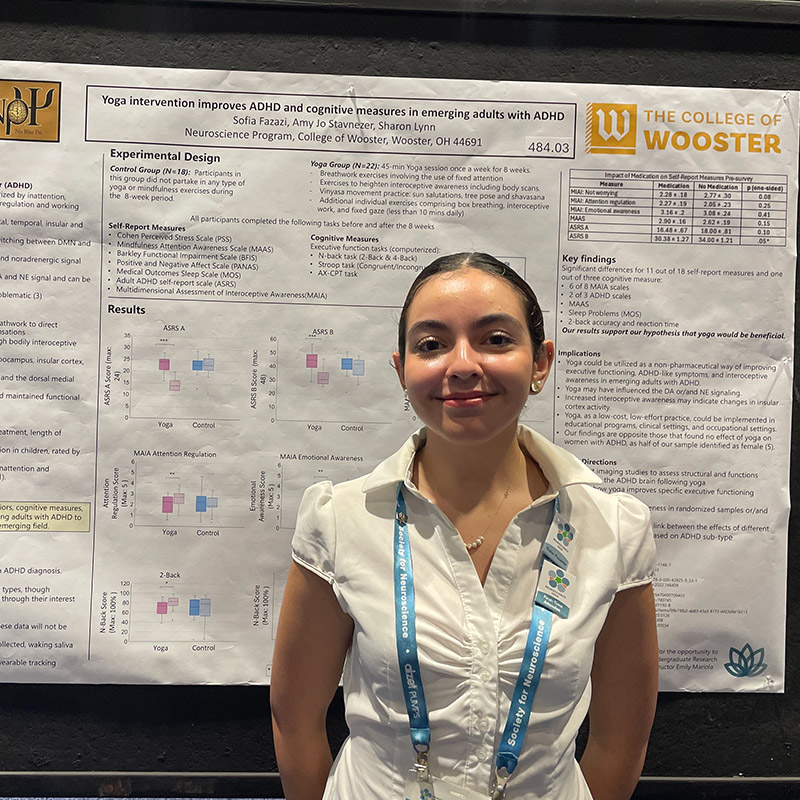
Wooster students present research at Society for Neuroscience annual meeting
Four students from The College of Wooster presented original research from their sophomore research and Independent Study projects at the Society of Neuroscience annual […]
Neuroscience is a multidisciplinary major that gives students exposure to biology, psychology, chemistry, philosophy, computer science, and other disciplines as they work to understand the brain and the body’s nervous system. A degree in neuroscience is good preparation to work in medical research or to pursue medical or graduate school. Most graduates in neuroscience from The College of Wooster go to graduate or medical school, while others have entered the job market as researchers at hospitals or at a university.
Students who major in neuroscience at The College of Wooster will find the courses are multidisciplinary and provide a strong foundation in the sciences. Students choose to concentrate in cognitive and behavioral neuroscience or cellular neurobiology, with each concentration allowing students to choose electives that help them further focus on their research interests. All students at The College of Wooster complete independent research on a topic of their choice under the guidance of a faculty mentor, culminating in a thesis delivered in spring of their senior year.
Learn about Wooster’s STEM community through the STEM Success Initiative
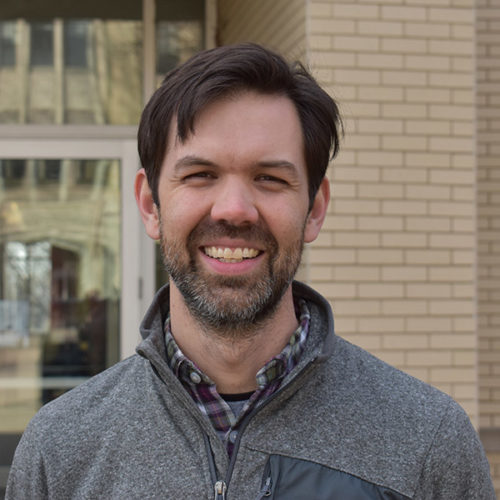
Associate Professor of Psychology; Neuroscience (On Leave Spring 2025)

Associate Professor of Psychology; Department Chair of Neuroscience
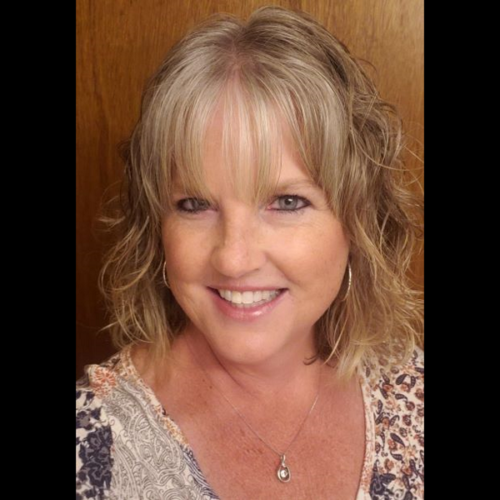
Administrative Coordinator - Biology, Environmental Studies, Neuroscience

Four students from The College of Wooster presented original research from their sophomore research and Independent Study projects at the Society of Neuroscience annual […]
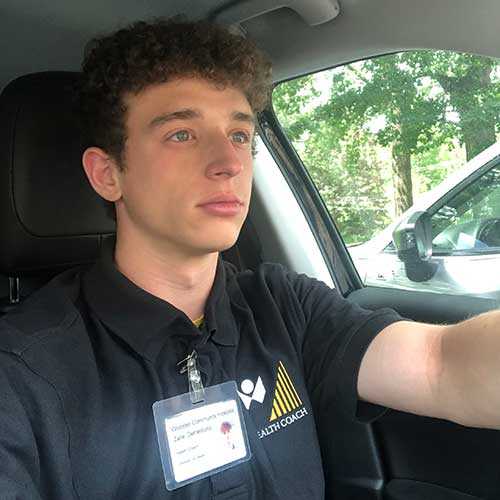
Zane DeMercurio ’26, a neuroscience major at The College of Wooster completed an APEX fellowship as a health coach in Wooster, Ohio. He worked […]
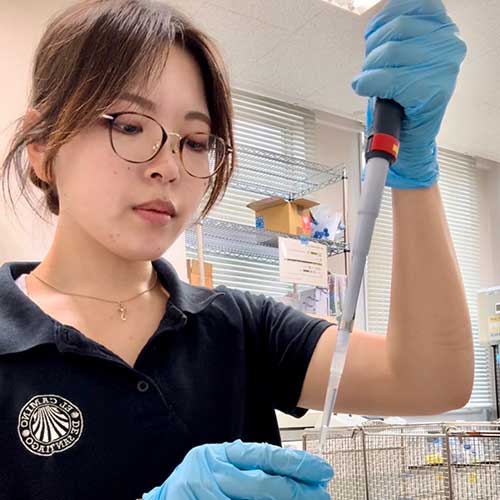
Mako Shimizu ’26 a neuroscience major and chemistry minor at The College of Wooster, completed an APEX fellowship at Imai Lab at Kyusyu University […]
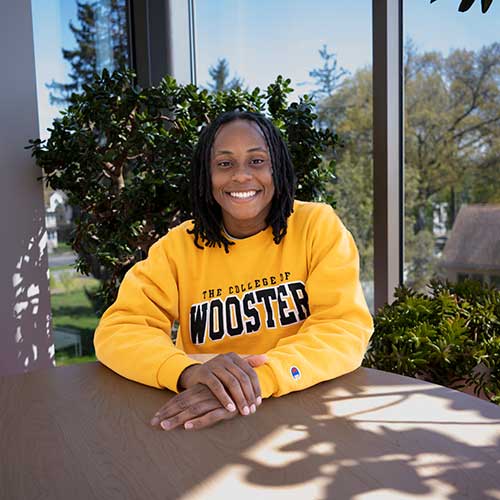
As a high school student with a couple psychology courses under her belt, Tyara Thompson ’24 had “fallen in love with the brain.” The […]
Neuroscience majors complete seven required foundational courses and are asked to focus on one of two tracks: psychology or biology.
The goals of the Neuroscience Program are to provide students with the essential foundational knowledge, skills, confidence and research experiences that will allow them to identify and meet their intellectual and professional goals. Core areas of understanding will include, but are not limited to, neuroanatomy, neuronal physiology, the influence of development, genetics and environment on the central nervous system, the behavioral and physiological effects of pharmacological agents, the impact of stress, disease and aging on behavior and the brain, and the underlying cellular processes of learning, memory and retrieval of information. In each track, students will master methodology and experimental techniques relevant to the areas of Neuroscience they find most engaging. Students will apply critical thinking and problem solving skills on both their specific research projects and also the larger challenges facing the field of Neuroscience. In addition, it will produce liberally educated scientists who are well-versed in scientific methodology and its application, who possess a thorough knowledge of fundamental neuroscientific concepts, and who are able to express themselves with clarity, both orally and in writing.
View Courses for the Cognitive Behavioral Neuroscience – Psychology TrackView Courses for the Neurobiology – Biology Track
Like all Wooster students, Neuroscience majors complete three semesters of study that culminate in the completion of their Independent Study. In their junior year, students will have the opportunity to narrow their focus to a particular area of interest within the larger field of neuroscience. They will learn to demonstrate a mastery of the available literature and possible laboratory methods related to that topic, and will then work toward identifying a research question to pursue during their senior year. In the senior year, each student will work closely with a faculty member to fully develop, conduct and complete a yearlong research project assessing central nervous system functioning at the organismal, cellular or a combination of these levels.
Recent I.S. projects include:
| Student | Year | I.S. Title | Major 1 | Major 2 | Advisor |
|---|---|---|---|---|---|
| Please search to view results | |||||
As a high school student with a couple psychology courses under her belt, Tyara Thompson ’24 had “fallen in love with the brain.” The […]
Name: Malik Moore Major: Neuroscience-Biology Advisor: Seth Kelly Neurodegenerative diseases, such as Alzheimer’s disease, have become increasingly prevalent in aging societies, causing significant global […]
Name: Sarah Snider Major: Cognitive Neuroscience Minor: Economics Advisor: Amy Jo Stavnezer Cognitive plasticity is the ability for cognitive outcomes to be flexible and fluid. […]
Name: Natalie Ibrahim Belle Major: Neuroscience (Biology) Advisors: Alfredo Zuniga, Nicholas Brandley Intrusive symptoms in post-traumatic stress disorder occur due to the generalization of contextual fear […]
Wooster graduates with degrees in Neuroscience have chosen careers in a broad range of fields, from medicine, biological research, physical therapy, veterinary medicine, environmental law, exercise physiology, and cytotechnology, to art illustration, teaching, wildlife and fisheries management, evolutionary biology, and public health. Over half our graduates go on to continue their education at professional schools such as medical, veterinary, dental, or nursing schools at schools like Case Western, The Ohio State University, or in graduate programs at universities such as Yale, Michigan, UC Davis, UCLA, Columbia, Harvard, George Washington University, and Duke.
The dedication to health sciences runs deep for Eran Maina ’21 and Scott Perkins ’20. The biochemistry & molecular biology and neuroscience majors, respectively, […]
Despite being the son of two physician parents, Lakshman Swamy ’05 had no intention of pursuing medicine when he first set his sights on […]
The College of Wooster Alumnus Maurryce Starks ’18 was awarded a five-year fellowship from the National Science Foundation Graduate Research Fellowship Program (NSF-GRFP). Starks […]
In June, Crain’s Cleveland Business, a business news source for Northeast Ohio, named Nathan Sundheimer ’17 to their “20 in their Twenties” list, an […]
The Program in Neuroscience is housed in the Ruth W. Williams Hall of Life Sciences, providing modern, expansive space for classrooms, teaching laboratories, and research laboratories. The Program in Neuroscience shares numerous research labs, classrooms, and offices with the Departments of Biology, Chemistry, and Psychology, and the Interdisciplinary Programs in Biochemistry & Molecular Biology and Environmental Studies.
Research facilities and equipment available to neuroscience majors include advanced microscopy, aquatics, EEG/ERP laboratory, environmental neuroendocrinology laboratory, eye-tracking, human cognitive research facilities, vertebrate animal facilities for birds and rodents, and vertebrate animal facility for fish.


Ruth W. Williams Hall has an Aquaneering Zebrafish Housing system which consists of a seven-shelf double-sided rack that allows for a flexible arrangement of tanks from 1.4 to 9.5 liters in size. All tanks are maintained on a self-contained water filtration system that controls water pH, conductivity, and temperature. Water parameters in the aquatic facility can be controlled remotely through mobile monitoring. The aquatic facility can support research in a variety of disciplines, including genomics, developmental biology, animal behavior, and organismal physiology, among others.


The EEG/ERP laboratory in Ruth W. Williams Hall is also equipped with a Tobii Nano Pro eye tracker which captures eye gaze data at 60 Hz and is designed for fixation-based studies. The Tobii Nano Pro is a mobile eye tracker which can be flexibly mounted on laptops and desktop screens. Experiment software is E-prime 3.0 with extension for Tobii Nano Pro.
Ruth W. Williams Hall also houses a neurondocrinology laboratory that allows measurement of both circulating and tissue-specific hormones. This laboratory is optimized to run ELISAS to detect steroid hormones such as testosterone, cortisol, and corticosterone, as well as some protein hormones in a variety of mammalian and avian species. Equipment for measurement of circulating levels of steroid binding proteins is also available, as well as a cryostat for creating thin slices of tissue in which hormones may also be detected through techniques such as immunohistochemistry. This laboratory is also equipped for the study of interactions of hormones and behavior in free-living songbirds.
Ruth W. Williams Hall and Morgan Hall have multiple rooms available for human cognitive research. These rooms provide a quiet environment for testing human participants with a wide variety of cognitive tasks. The rooms are equipped to support various methods like computerized testing (with LiveCode, Qualtrics, Testable, DirectRT, or E-Prime), paper-and-pencil testing, interviews, group testing, dyad testing, or physiological testing (including among others heat rate, pulse, skin conductance).

